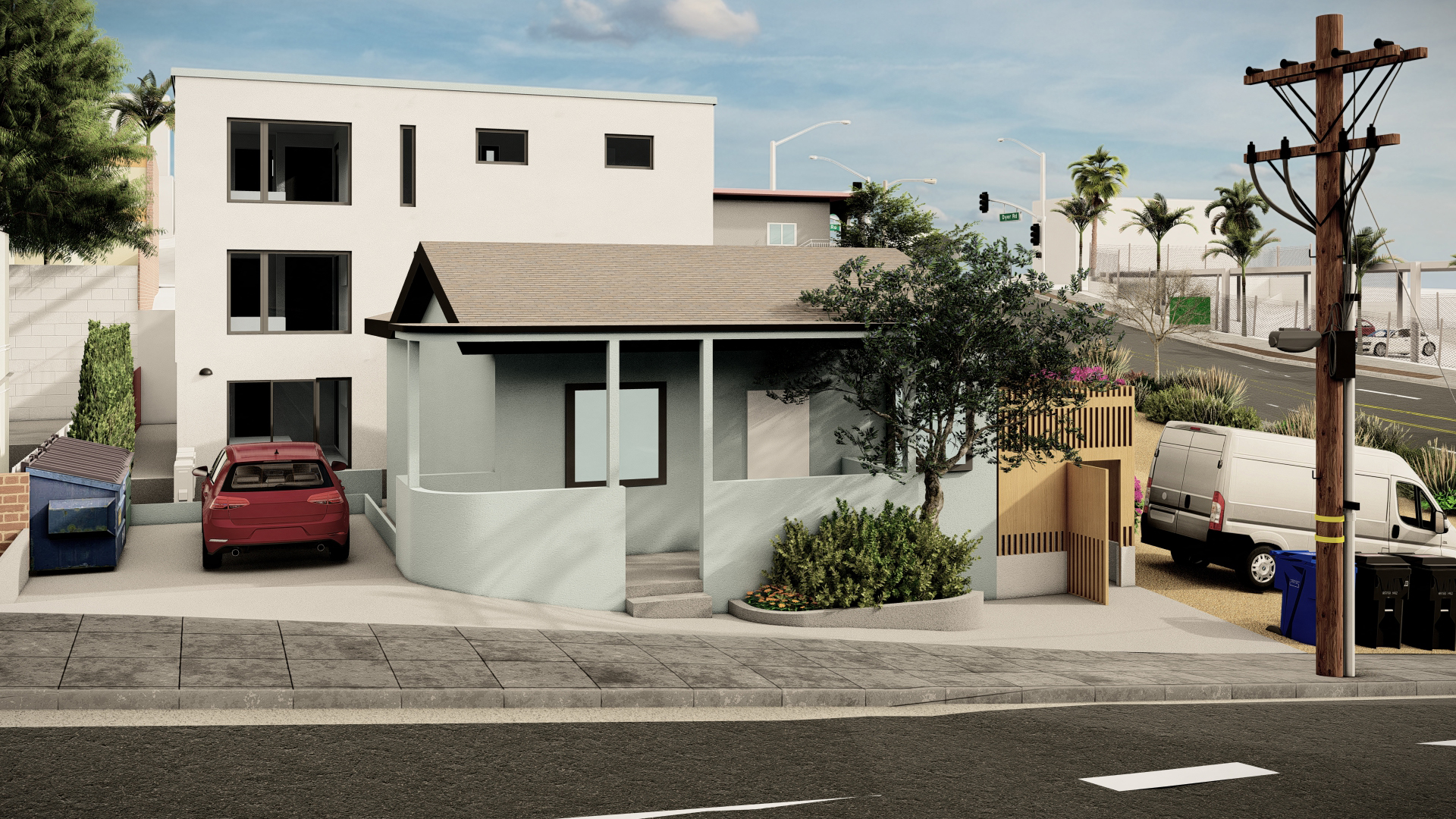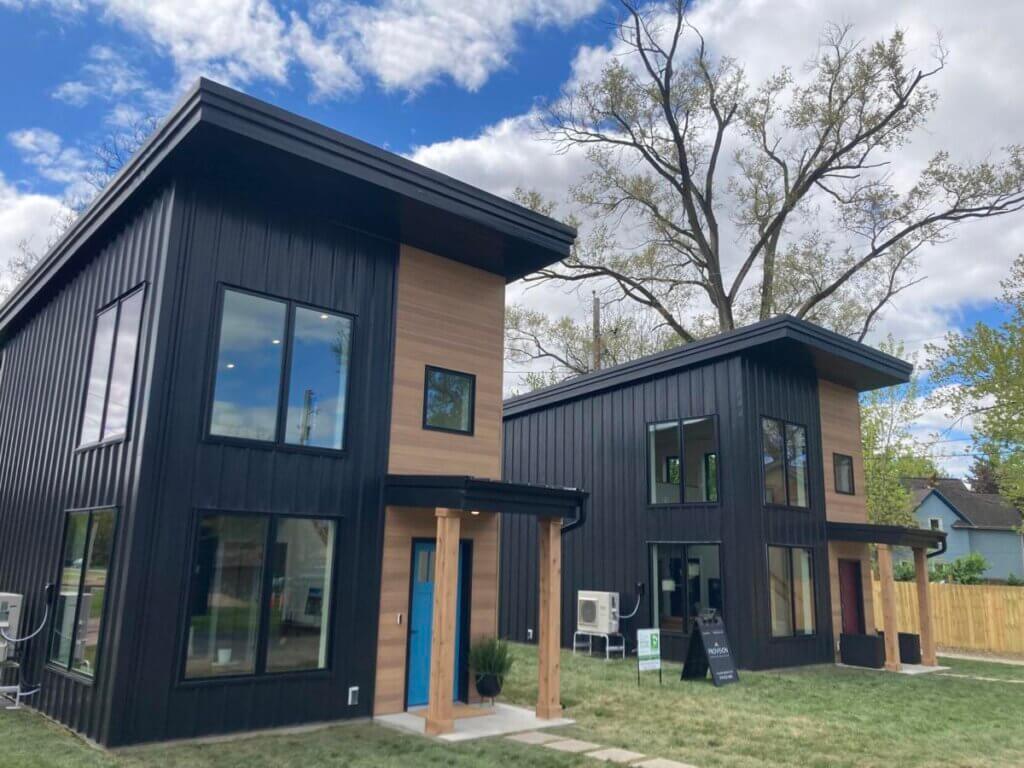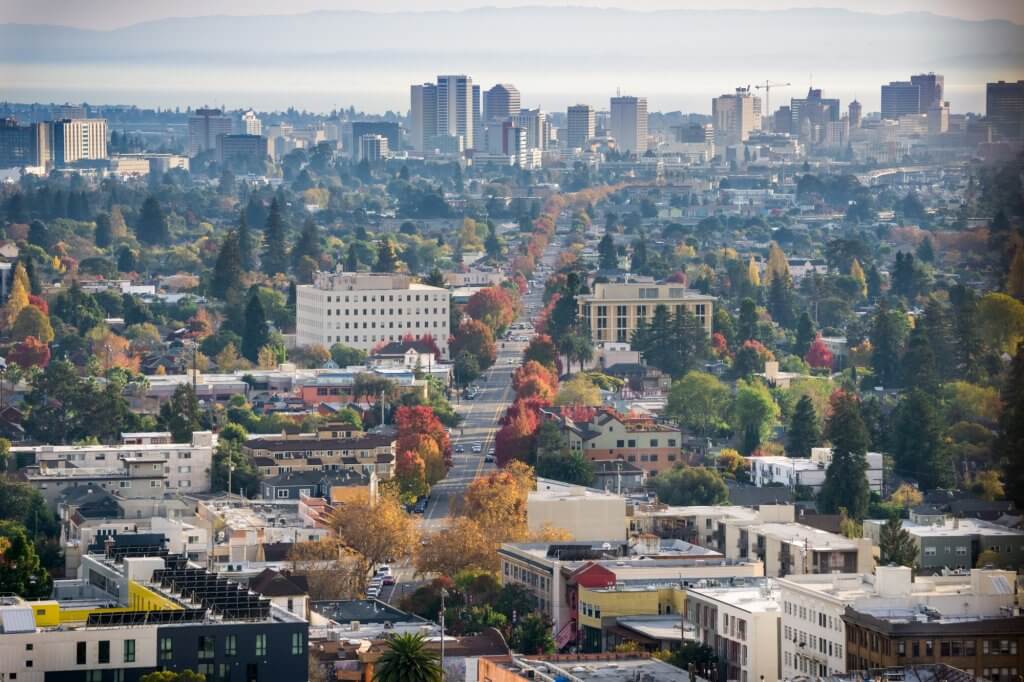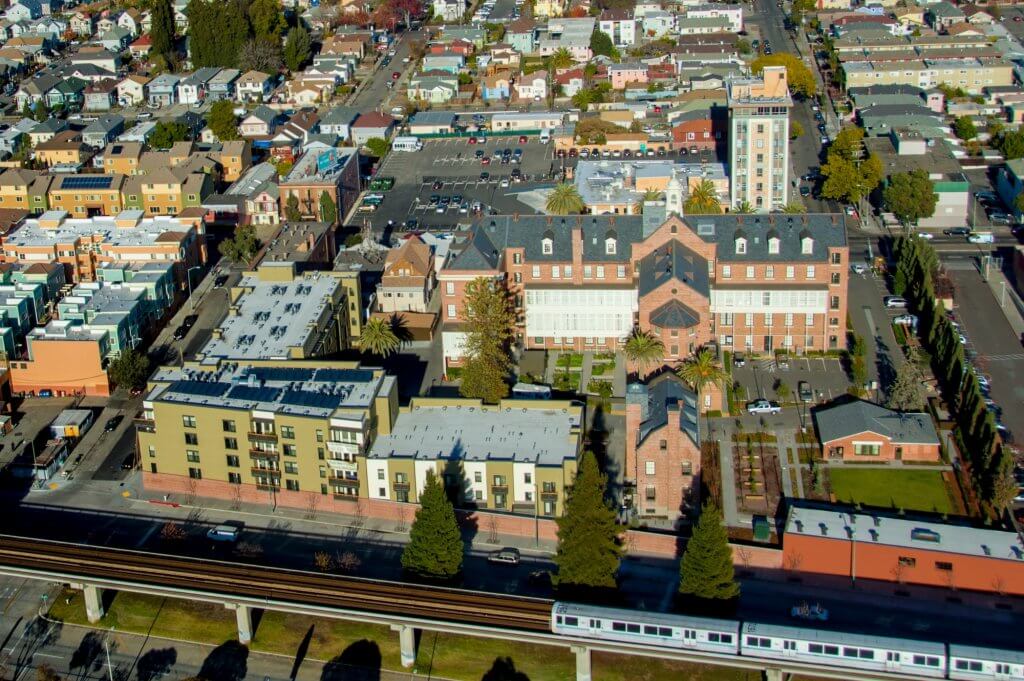San Diego’s Success in Spurring Missing Middle Housing: The Accessory Dwelling Unit Bonus Program
Published On February 15, 2023
Over the last several years, the State of California has undertaken several policy initiatives to spur the creation of missing middle housing, such as overriding local regulatory barriers to the construction of Accessory Dwelling Units (ADUs) and the recent passage of bills meant to facilitate the construction of smaller, lower-cost homes (e.g., Senate Bill (SB) 9 (Atkins, 2021), SB 10 (Wiener, 2021)). However, cities and other local governments have a strong influence on whether these state policies can achieve their intended goal. For example, a 2022 Terner Center analysis found that some localities have imposed requirements and standards on newly-allowed lot splits and duplex construction that likely hinder the effectiveness of the state law SB 9. On the other hand, some cities have used their power to go beyond state-mandated standards by creating their own policies to incentivize housing construction.
One such example is the City of San Diego’s ADU Bonus Program. In 2019, the state legislature passed Assembly Bill (AB) 671 (Friedman, 2019), which requires cities to develop strategies that facilitate construction of ADUs for households with very low-, low-, or moderate-incomes. Following the law’s passage, San Diego became the first major city in the country to offer a density incentive for small-scale housing projects that include deed-restricted housing. San Diego has since seen a substantial increase in the production of ADUs, including in ADUs with affordability restrictions. While still early in implementation, the San Diego ADU Bonus Program provides a promising example for how cities can proactively facilitate housing growth that is consistent with local needs and preferences, as well as incentivize affordability without using public subsidies.
This commentary looks at how San Diego’s ADU Bonus Program is working so far. It was informed by a review of permitting data, interviews with small-scale developers, and discussion with planning department staff in the city of San Diego.
San Diego’s ADU Bonus Program: How It Works
Since 2016, state legislators have passed a number of iterative laws requiring California cities to remove barriers to the development of ADUs. An ADU is a small secondary housing unit on a single-family or multifamily parcel, often in the backyard and more affordable than a single family home. These state laws have been refined over time to include more prescriptive standards and additional reductions in barriers for ADU development. These laws have been further strengthened through enforcement actions and guidance issued by the California’s Department of Housing and Community Development (HCD). For example, AB 68 (Ting, 2019) and AB 881 (Bloom, 2019) give ADUs by-right ministerial development and require that permit decisions be concluded within 60 days. SB 13 (Wieckowski, 2019) removes impact fees for ADUs smaller than 750 square feet and requires that impact fees be assessed by square footage. Furthermore, HCD regularly updates an Accessory Dwelling Unit Handbook guiding cities on how to implement their local ordinances to comply with state law.
The City of San Diego has gone above and beyond these state laws, in part to achieve compliance in its Housing Element, a state-mandated requirement that all cities create meaningful plans to accommodate their fair share of the state’s overall expected growth. In 2020, the City received a planning target of 108,036 new housing units over the next 8 years, 64,179 of which must be affordable to moderate- or lower-income residents. In response, the City focused on ADUs as a core component of its strategy to meet its target, and moved to strengthen its existing ADU program.
San Diego’s ADU Bonus Program has two main goals: increase overall housing supply, and incentivize the creation of deed-restricted housing without public subsidy. The Program works as follows: property owners can apply to build more ADUs than permitted on a given parcel by state law in exchange for also building income-restricted units. State law allows one detached ADU and one junior ADU1 to be built as of right. The Program permits the construction of one additional ADU that is market-rate and not income-restricted for every additional ADU that is deed-restricted to moderate income households for 15 years, or low or very low income households for ten years. By pegging deed restrictions to AMI, the Program stabilizes occupants’ rents by limiting their year-over-year rent increases to a percentage of AMI, which is typically a lower threshold than what is allowed by the statewide rent cap.2 In addition, the Program allows more units than required to benefit from the state-mandated streamlining. Under these rules, units receive ministerial approval—that is, approval exempt from local public hearings and other discretionary review— and reduced permitting fees. In addition, developers are not required to make off-site improvements beyond those to support a typical single-family home project. The Program specifies that, at all times, the deed-restricted housing shall be comparable in size, bedroom mix, amenities, and features to the accompanying market-rate ADU. Similar to units built under state ADU law, parking is also not required for units built through the Program and if a developer chooses to provide parking, it is often lower cost since it is provided at ground level.
In addition, the Program use city-designated Transit Priority3 maps to facilitate additional development in primary transit corridors. In non-Transit Priority areas, the ADU Bonus Program allows owners to build two additional ADUs in addition to the ADU(s) permitted by state law. Of the two additional ADUs allowed under the Bonus Program, at least one must be deed-restricted. As a result, a given lot throughout the city could have up to five total units (main structure, a junior ADU, one state-allowed ADU, and two bonus ADUs), with one of those units being a deed-restricted affordable unit. In Transit Priority areas, however, the Program allows builders to develop an unlimited number of bonus ADUs as long as each market-rate unit is paired with a deed-restricted unit. This is important because it allows more housing along transit corridors, sustaining more funding for transit programs compared to single family homes.
The Program can be used on either single-family or multifamily properties. Existing city land use regulations for floor area ratio, lot coverage, and height requirements all influence the number of additional units that can fit on a given lot but these requirements are the same for both single-family and multifamily lots.
Findings
ADU permits have meaningfully increased since the start of the Program in 2021.
Prior to the creation of the ADU Bonus Program, affordable ADUs were rare in San Diego.4 Within the first two years of implementation of the ADU Bonus Program, 295 deed-restricted ADUs to low or moderate-income households were in the process of being built (Figure 1).
Figure 1: Number of Deed-Restricted ADUs Permitted in San Diego, with projected ADU Bonus Program Units
Note: The yellow bar represents data from City of San Diego staff and the gray bar represents data from HCD’s APR Data Dashboard. There is likely a small amount of double counting in the overlapping 2021 data between the total ADU counts from HCD APR Data and the bonus ADU counts from the city of San Diego as we are unable to de-duplicate the data based on the information that we have.
The Bonus Program has also facilitated the growth of overall ADU production in San Diego. In addition to the 295 deed-restricted ADUs, the Program created 253 bonus ADUs over the 147 ADUs already allowed by state law. While these units are not deed-restricted, research from the Center for Community Innovation has found that on average, ADU rents are more affordable than other forms of new housing.
Figure 2: Breakdown of ADU Bonus Program Projects (January 2021-November 2022)
Note: 147 Base ADUs are only projects that include bonus ADUs and do not reflect the full extent of ADUs built in San Diego. Source: City of San Diego staff.
Why the ADU Bonus Program Has Worked So Far
We spoke to several builders and city planning officials to understand why the Program has been successful so far. Interviewees told us that a combination of factors have allowed more and larger ADU projects to pencil out. Specifically, interviewees highlighted four key elements that make the Program work:
- Unlimited bonus ADUs in Transit Priority areas increase project feasibility by maximizing the number of units allowed on a given lot. The added units allow developers to achieve economies of scale by building more than just one or two extra units, which is a key to unlocking missing middle housing construction since sometimes four units are not enough to make a project pencil.
- By-right ministerial approvals shorten the permitting timeline to construct multiple ADUs, particularly in comparison to a typical multifamily building or affordable housing project. While state law requires ministerial approvals for up to two ADUs, city staff in San Diego extended this approval streamlining to the ADU Bonus Program units as well.
- The City allows its regulatory agreement for the deed-restricted units to be recorded junior (2nd position)5 to the primary mortgage for the property. This means that in the event of foreclosure, private lenders have the ability to remove the deed restrictions and bring the units back to market rate. This eases financial concerns for lenders, some of whom may otherwise be wary of financing deed-restricted homes.
- For deed-restricted units, the San Diego Housing Commission completes the initial and ongoing income certification for the building owner at a cost to the owner of about $150 annually per unit. By checking tenant eligibility, the Commission assumes one aspect of administrative support that small builders and developers may not be equipped to manage.
The ADU Bonus Program has allowed more missing middle housing typologies to be built in San Diego’s low-density neighborhoods.
The Program unlocks missing middle housing typologies6 like cottage clusters and small apartment buildings throughout San Diego’s neighborhoods, opening up new types of housing in approximately 70 percent of the city’s overall land that would otherwise be restricted to single-family. To date, the average number of units created in each project is roughly eight units per lot.7
By building smaller units for homeowners and renters in infill areas, the Program increases overall density, which may help California reach its 2030 climate goals. Interviewees told us that ADU Bonus Program projects can oftentimes be financially feasible even when a larger multifamily new construction project nearby may not be. The comparative advantages in permitting timelines, lowered impact fees, and building code flexibilities for ADU Bonus Program units offer flexibility and financial incentives to developers to prioritize this housing type. Interviewees also noted that the Program has a “visual advantage” over traditional multifamily development in that it activates existing space by allowing lower density parcels to increase the number of homes without significantly impacting existing neighborhoods and structures, better preserving “neighborhood character,” which is often a concern around new development.
Financially, the Program allows for quick approval on new multi-unit buildings, allowing developers the option to build units in the back of an existing multifamily building and rehab the existing structure. One interviewee noted that they were able to fund the repairs for an existing triplex by packaging it with the construction of a new nine-unit apartment building on the same lot.
Figure 3: Rendering of New ADUs Allowed by San Diego’s Bonus Program A new (nine) unit three-story single-stair courtyard building composed of microunits in the back. The new building sits behind the front home, an existing Post War triplex to be renovated. Courtesy of PALO (palo.us)
A new (nine) unit three-story single-stair courtyard building composed of microunits in the back. The new building sits behind the front home, an existing Post War triplex to be renovated. Courtesy of PALO (palo.us)
The ADU Bonus Program creates new opportunities for first-time builders.
Interviewees highlighted their belief that the city’s new ADU Bonus Program has opened the door for more small-scale developers. Interviewees argued that, by creating a wider pathway for financial feasibility and scale, smaller industry players such as general contractors, architects, and building trades members now have an easier path to build ADUs and infill housing. Moreover, the Program creates more opportunities in ideal transit-oriented locations for builders to build small clusters of units, a housing archetype often too small for a large developer. City staff and developers also noted that smaller scale builders are more likely to be led by women or people of color, which was one of the reasons why the City initially pursued this small-scale infill Program.
City staff and developers noted that the relatively low cost to build missing middle housing is one reason why smaller-scale builders have been able to find success using the city’s ADU Bonus Program. Missing middle housing is often built using cost-effective one- or two-story wood frames, more likely to be prefabricated off-site, and can require less capital and time to construct than other forms of housing development. Financing these projects has become easier as well because financial institutions have begun to underwrite using prospective rental income from additional ADU units for commercial loan standards (i.e., relying on net future operating income or cash flow of the property and not solely the borrower’s ability to repay).8 The first proposed ADU Bonus Project is five total units costing approximately $800,000 to build in a historically white, upper middle class neighborhood.
Smaller-scale developers and homeowners often have less capacity and expertise to adhere to complex income verification and regulation requirements typically required by affordable housing development. Interviewees noted that the Program’s approach to deed restriction requirements were an important incentive for smaller-scale developers to participate in the Program. In particular, the San Diego Housing Commission’s commitment to assist with income verification has been a significant help.
Figure 4: Rendering of New ADUs Allowed by San Diego’s Bonus Program New 12 unit three-story single stair building composed of (eight) one bed/one baths and (four) studios was built using the city’s ADU Bonus Program. The new building sits behind an existing Spanish bungalow single-family development to be converted to a Cafe (without zoning changes) and south of existing (four ) one bed/one bath cottages to be renovated. Ample outdoor space between new and old buildings is provided. Courtesy of PALO (palo.us).
New 12 unit three-story single stair building composed of (eight) one bed/one baths and (four) studios was built using the city’s ADU Bonus Program. The new building sits behind an existing Spanish bungalow single-family development to be converted to a Cafe (without zoning changes) and south of existing (four ) one bed/one bath cottages to be renovated. Ample outdoor space between new and old buildings is provided. Courtesy of PALO (palo.us).
Feedback and collaboration between San Diego planning staff and small-scale developers and builders has been an important factor in the ADU Bonus Program’s success.
According to the developers and city staff interviewed, the success of initiatives such as the ADU Bonus Program is due in part to the City’s intentional approach to including the real estate developers early on in the process. Interviewees note that direct input from small-scale builders was critical in calibrating the ADU Bonus Program.
The collaborative nature of housing program development in San Diego is not new. The City has deliberately moved small-scale housing projects forward through the city approval and permitting process but has also reformed other processes in development. Nearly 25 years ago, the city decided to pursue internal efficiency by creating its Development Services Department (DSD), a one-stop shop for builders and homeowners to submit various permits and inspections for review. Through the DSD, applicants have access to a dedicated project manager to assist throughout the approvals process. Our interviewees cited that this service helps to save time and resources, particularly in comparison to other cities that do not provide similar services. The planning department also updates its building codes at least once a year based on builders’ feedback to remove inconsistencies and barriers to new development.
The Program’s streamlining for developers and homeowners is not without cost for the City. Staff note that impact fee waivers, while they can be important in helping housing projects pencil out, have reduced overall funding for city-level infrastructure. In addition, while the Program has been successful in creating more homes overall, as we have highlighted in previous publications, subdivision and utility rules can make building missing middle condos complex. The current iteration of San Diego’s Program does not allow homeownership units. The ADU Bonus Program also has few family-sized two-bedroom or larger units proposed for construction. Based on interviews with city staff, San Diego plans to continue to improve on local solutions, such as updating specific building codes, reforming aspects of the subdivision map act, or requesting state and federal financing aid to invest in needed infrastructure.
Conclusion
San Diego’s ADU Bonus program reflects a local, innovative approach to encouraging more missing middle housing supply, especially in places with rising land costs and competitive housing markets. HCD recently awarded San Diego a “State Prohousing Designation,” in recognition of the City’s success through programs like the ADU Bonus Program and allowing the City to compete for additional state funding and resources. San Diego has also introduced other innovative programs such as its Complete Communities program and its local Density Bonus to streamline and incentivize more housing production overall. The ADU Bonus Program may be a model for other cities and the state of California who are interested in ways to increase the supply of infill housing and deed-restricted housing stock through ADUs.
Acknowledgements: The Terner Center would like to thank all of the interviewees for taking the time to speak with us. We would also like to thank Heidi Vonblum, Tait Galloway, Ann Kern, Jared Basler, Rammy Cortez, David Pearson, Daniel Shkolnik, and Jesse O’Sullivan for their additional interviews and feedback on this commentary.
Further acknowledgements to the Terner team members for review and assistance with publication: Ben Metcalf, Carolina Reid, Ryan Finnigan, and Cora Johnson-Grau.
Footnotes:
- Junior ADUs (JADUs) are no more than 500 square feet and are typically a bedroom in a single-family home that have a separate entrance into and out of the unit than the main entrance. The JADU must have cooking facilities, including a sink, but is not required to have a private bathroom (which can be shared with the main single-family home).
- Properties built in the last 15 years are excluded from California’s Tenant Protection Act of 2019 (AB 1482). The ADU bonus program’s deed restriction requirements protect tenants in new properties from immoderate rent increases.
- Set by SB 743, Transit Priority areas are within one-half mile of an existing major transit stop or one that is planned and meets certain criteria. San Diego’s Transit Priority areas include much of the city. See more here: https://www.sandiego.gov/sites/default/files/transit-priority-map.pdf
- Per data available from HCD, the City permitted no ADUs affordable to lower-income households and only seven ADUs affordable to moderate-income residents (80 percent to 120 percent of AMI) from 2018 to 202.
- A first position mortgage refers to a mortgage loan that is recorded as the first lien on a property. This means that if the borrower defaults on the loan, the lender holding the first position mortgage has the first claim to the property and will be the first to be repaid from the sale of the property.A second position mortgage refers to a mortgage loan that is recorded as the second lien on a property, behind the first position mortgage. The City does not receive compensation since they are not a lender to the project.
- Missing middle housing refers to buildings ranging in size and density between a single-family detached home and a mid-rise apartment building.
- According to the data we received from the City of San Diego the average number of total ADUs is 7.9 per lot and a median of four per lot.
- The median cost to build an ADU in California is about $150,000 according to a 2021 survey, compared to $540,804 for a typical single-family home, according to calculations by Terner Center staff. See more: https://www.aducalifornia.org/wp-content/uploads/2021/04/Implementing-the-Backyard-Revolution.pdf.





